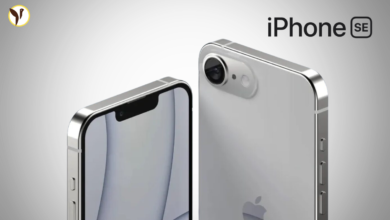
Introduction
February is American Heart Month, a time to focus on heart health and reduce the risk of heart disease. Monitoring your blood pressure is a crucial step in maintaining a healthy heart. While the Apple Watch itself cannot measure blood pressure directly, it can sync with compatible devices to provide a seamless and convenient way to track your blood pressure.
Why Monitor Blood Pressure?
- Establish a Baseline: Understand your “normal” blood pressure.
- Identify Fluctuations: Detect any sudden changes that may indicate health issues.
- Track Lifestyle Changes: Monitor the impact of diet, exercise, and stress management on your blood pressure.
Step-by-Step Guide to Using Your Apple Watch for Blood Pressure Monitoring
Step 1: Choose a Compatible Blood Pressure Monitor
Top Recommendations:
- Omron Evolv Wireless Blood Pressure Monitor: Portable and precise.
- Withings Wireless Blood Pressure Monitor: Offers immediate color-coded feedback.
- iHealth Feel Wireless Arm Blood Pressure Monitor: Stores up to 200 readings.
Step 2: Set Up the Device
- Pair the Device:
- Follow the manufacturer’s instructions to pair your blood pressure monitor with your Apple Watch.
- Ensure both your Apple Watch and the blood pressure monitor are connected to the same Wi-Fi network.
- Install the App:
- Download the corresponding app (e.g., Omron Connect, Withings, iHealth) from the App Store.
- Create an account and follow the setup instructions.
Step 3: Use the Health App
- Open the Health App:
- On your iPhone, open the Health app.
- Navigate to the “Blood Pressure” section.
- Start a New Measurement:
- Use your paired blood pressure monitor to take a reading.
- The data will automatically sync to your Apple Watch via the app.
Step 4: Regular Monitoring
- Set Reminders:
- Use the Reminders app to set consistent times for checking your blood pressure.
- This helps establish a routine and ensures you don?t miss any readings.
- Review Your Data:
- Regularly check the Health app to review your blood pressure readings.
- Look for trends and any significant changes over time.
Top Blood Pressure Monitors for Apple Watch
1. Omron Evolv Wireless Blood Pressure Monitor
Features:
- Precision: Clinically accurate readings.
- Built-in Display: Easy to read results.
- Bluetooth Sync: Seamlessly connects to your Apple Watch via the Omron Connect app.
- User-friendly: Simple setup and operation.
Pros:
- Affordable.
- Portable.
- Reliable accuracy.
Cons:
- Limited battery life.
- No advanced analytics in the app.
2. Withings Wireless Blood Pressure Monitor
Features:
- Color-coded Feedback: Immediate visual indication of your blood pressure status.
- Comprehensive Charts: Detailed history of your measurements.
- Bluetooth Sync: Connects to your Apple Watch using Bluetooth.
- Advanced Analytics: Provides insights and trends in the Withings app.
Pros:
- User-friendly interface.
- Advanced analytics and trend tracking.
- High-quality build.
Cons:
- More expensive than some alternatives.
- Requires a subscription for full features.
3. iHealth Feel Wireless Arm Blood Pressure Monitor
Features:
- Large Memory: Stores up to 200 readings.
- Easy to Use: Simple setup and operation.
- Bluetooth Sync: Connects to your Apple Watch using Bluetooth.
- Multiple Users: Supports multiple profiles for family use.
Pros:
- Affordable.
- Large memory capacity.
- Multiple user support.
Cons:
- No built-in display.
- Basic app features.
Tips for Controlling Blood Pressure Through Exercise
- Monitor Your Step Count: Set daily step goals using the Activity app.
- Track Your Heart Rate: Monitor your resting heart rate and set heart rate zones during workouts.
- Log Your Exercise: Use the Apple Watch to log different types of workouts and track your progress.
By following these steps and using the Apple Watch to monitor your blood pressure, you can take a proactive approach to maintaining a healthy heart. Stay consistent, and consult your healthcare provider for any significant changes in your readings.







